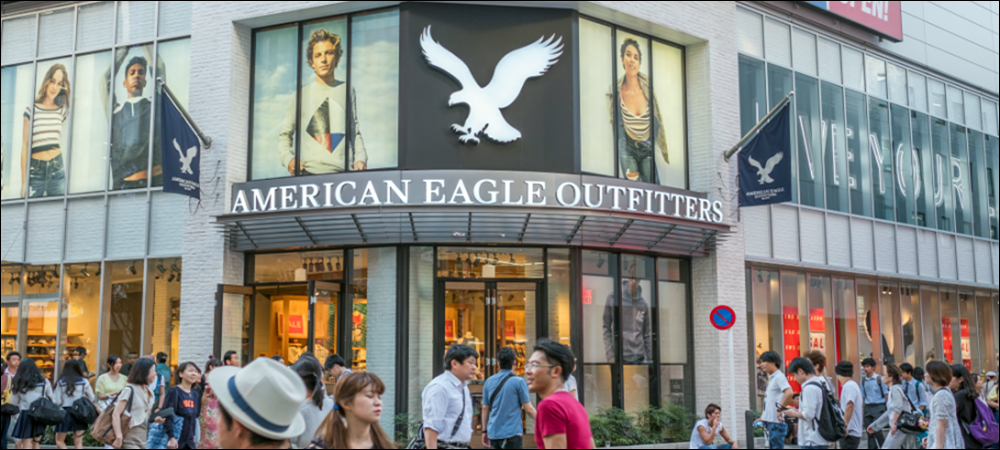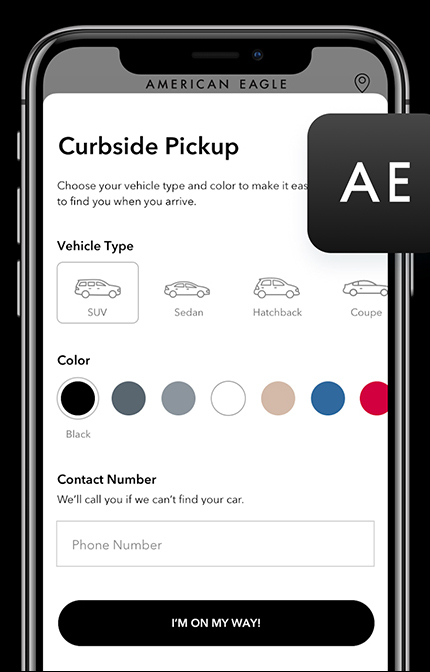American Eagle Outfitters (AEO) is in the process of rolling out a near-real-time location system solution across approximately 500 stores, which is expected to be completed by spring of next year. The solution, provided by RADAR, leverages ultrahigh-frequency (UHF) radio frequency identification (RFID) overhead reading sensors, and in the future it expected to include computer vision as well.
While RFID currently provides hands-free location data, the company says that with computer vision, that data will be more precise and could be married to information regarding traffic and the movements of shoppers around a store, in order to understand how they engage with products. The clothing and accessories retailer is headquartered in Pittsburgh, Penn., and it sells men’s and women’s jeans, polo shirts and other casual clothing. At present, it operates 901 stores throughout the United States, Canada, Mexico and Hong Kong.

AEO is currently rolling out the RADAR technology at 500 stores, after having piloted the system at eight sites to determine how well it could capture inventory data, and how it would be received by employees. RADAR was launched a decade ago on the premise of turning stores into physical data centers, according to Spencer Hewett, the company’s founder and CEO. Retailers use its solutions to locate inventory in real time, address inventory and labor productivity issues, and improve customer experiences.
Many UHF RFID solutions deployed at stores provide location data based on handheld readers that employees carry around with them on the store floor or in the back room, conducting weekly inventory counts or locating specific items. RADAR says it takes a more comprehensive approach by providing a hands-free solution that identifies where goods can be found throughout a store, with overhead sensors that have built-in readers to capture tags within their vicinity in real time.
 In that way, Hewett says, workers can identify tagged items at a specific location at any time, by simply accessing that data in the software. The RADAR system then provides retailers or brands with data indicating the locations of goods throughout each day, allowing a deeper understanding of how consumers interact with stores and products. “Our technology is helping to fix store operations,” he states, “and our product offers unparalleled inventory and location accuracy for [more than] 99 percent of products in near-real time.”
In that way, Hewett says, workers can identify tagged items at a specific location at any time, by simply accessing that data in the software. The RADAR system then provides retailers or brands with data indicating the locations of goods throughout each day, allowing a deeper understanding of how consumers interact with stores and products. “Our technology is helping to fix store operations,” he states, “and our product offers unparalleled inventory and location accuracy for [more than] 99 percent of products in near-real time.”
How the System Works
To use the technology, AEO and other retailers employ passive RFID tags applied to their products. Each RFID chip is embedded in a retailer’s or brand’s price tag, and is encoded with a unique ID number linked to the stock-keeping unit details for that specific product. All merchandise in a store is tagged, Hewett explains, so that it can be tracked whether it’s on the sales floor, in the stock room or in a fitting room. At each store, RADAR installs its own sensors on the ceiling, with built-in RFID readers, then connects them to a switch and controller at the back of the store for power and connectivity.
Once the solution is turned on, Hewett explains, sensors automatically begin reading all products in the front and back of the store. Data is sent to the cloud, and to an app for store associates in real time. “Within the store boundaries,” he states, “RADAR’s technology constantly reads the tags.” For example, if a customer moves a green hat from a table to the dressing room, the app will automatically update its location.
Workers can use the app or access the system’s dashboard to view in real time where a product is located, as well as find that item for a shopper, fulfill a curbside pickup order or ship it to a customer. The system enables the retailer to know when products have left the store and need to be replenished. “This also helps with customer expectations and experiences,” Hewett says, since the goods they expect are at the store and easy to locate, which means higher sales rates for the retailer and brand.

Spencer Hewett
The solution is intended to reduce the amount of labor time workers previously spent searching for specific items or counting inventory. The American Eagle rollout began with eight stores at which the retailer tested the technology. It determined that inventory accuracy was near 100 percent, Hewett says, and the retailer received positive feedback from managers and workers who used the app to find products on a map. This process, they reported, was quick and effortless.
Computer Vision Will Enhance the Data
While the solution currently provides location data via the transmissions of RFID tags captured by overhead sensors, Hewett says computer vision will expand that visibility. Cameras built into the overhead sensors will help to make location data more precise, he predicts, as well as enable item-to-people interaction measurements. The cameras capture visual data that the solution then leverages to accomplish artificial intelligence interpretation, which includes the locations and movements of individuals and tagged merchandise throughout the space in which the sensors are deployed.
This data will enable analytics and automated checkout, Hewett explains. “We have an entire roadmap dedicated to computer vision,” he states, “to build on top of our core RFID capabilities with inventory and store operations, which we are very excited about.” RADAR provides an inventory API and a suite of mobile applications that run off American Eagle’s servers. The key apps for associates include Look-Up (for users to find specific products), Restock (to enable the automated restocking of the sales floor) and a Retail Operations App (to support receiving, transfers or returns.) The API also enables AEO to leverage real-time inventory data within several of its own core systems.
In the long term, American Eagle Outfitters says it intends to use the technology for applications beyond inventory visibility, such as enabling point-of-sale and electronic article surveillance capabilities. That means tagged products can be purchased more automatically and accurately, and that goods can be detected and identified as they leave a store. In addition to AEO, two other Fortune 500 retailers are now piloting the solution, RADAR reports. The company currently provides the technology for in-store use, Hewett says, adding, “We plan to roll this out to DCs and warehouses in the future, as we definitely see a value-add for retailers there.”
Key Takeaways:
- American Eagle Outfitters has deployed a hands-free real-time location system with overhead RFID readers, which it is now rolling out across 500 U.S. stores.
- The solution from RADAR will include computer vision technology in the future, so that data about shoppers’ in-store movements and activities will enable analytics about how they engage with products.

